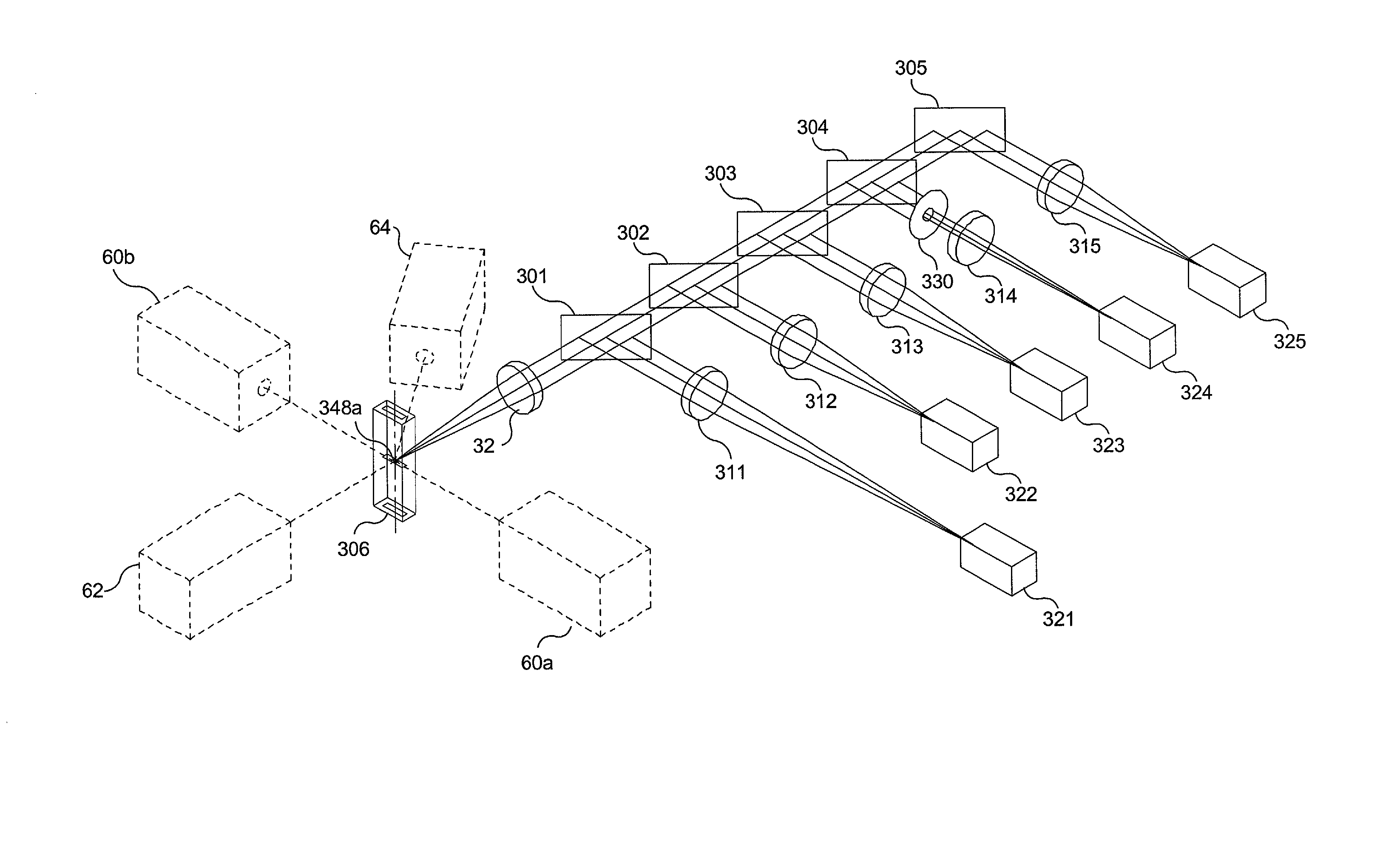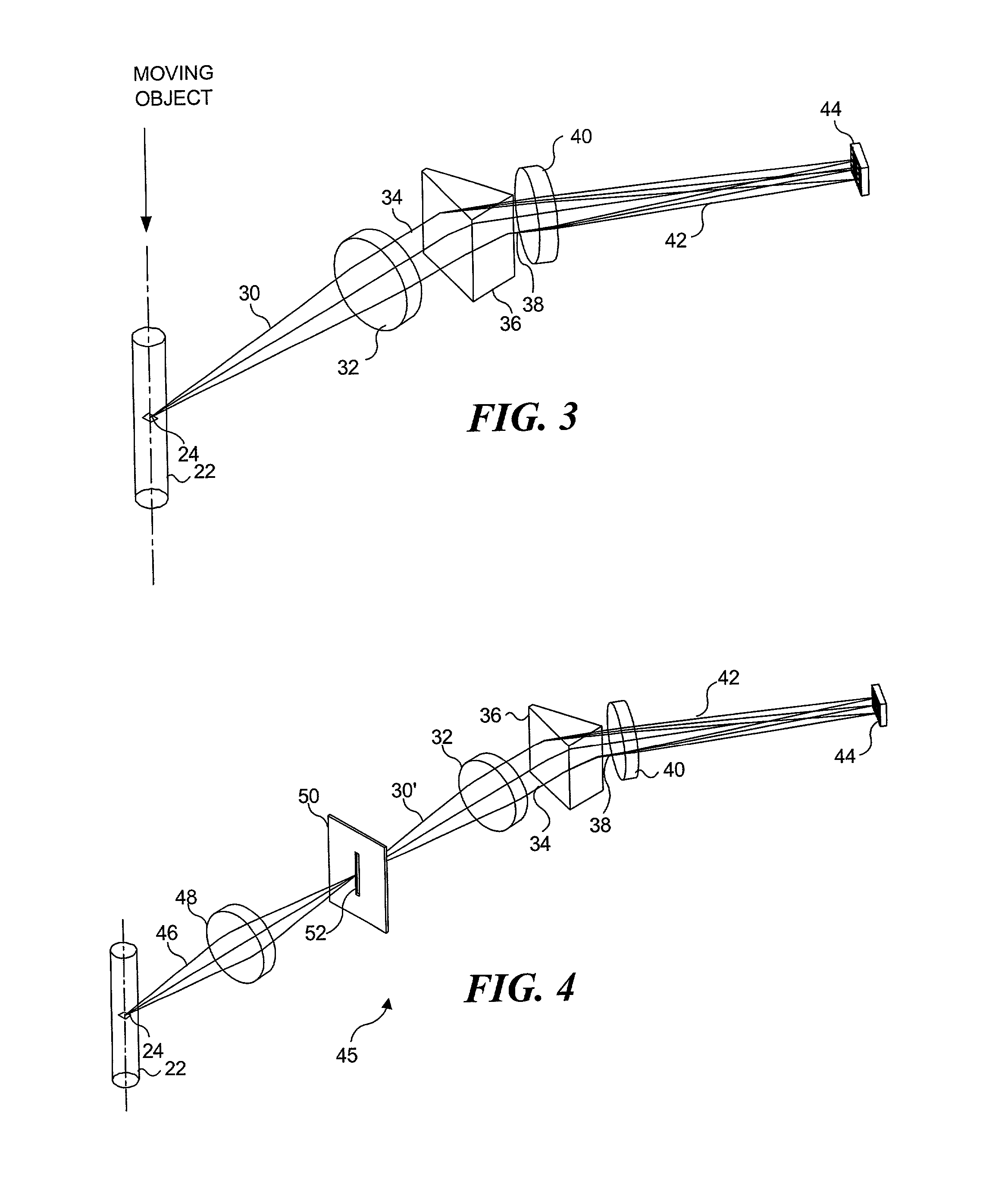Imaging and analyzing parameters of small moving objects such as cells
a technology of moving objects and parameters, applied in the field of imaging moving objects or particles, can solve the problems of inability to simplify protocols, little or no fetal cells for analysis, and the number of biological and medical applications that are currently impractical, and achieve the effects of increasing the amount of light incident upon objects, prolonging imaging, and long integration tim
- Summary
- Abstract
- Description
- Claims
- Application Information
AI Technical Summary
Benefits of technology
Problems solved by technology
Method used
Image
Examples
fifth embodiment
[0100] A sixth preferred embodiment, as illustrated in FIG. 10, is an imaging system 120 that is slightly different than the preceding fifth embodiment, since a dichroic filter 102' is employed that is angled in a different direction, toward a second TDI detector 44b. A dispersed pattern image represented by light 108' is produced by a cylindrical lens 106' in this embodiment. Just as in imaging system 100, light transmitted through dichroic filter 102' is focussed onto TDI detector 44a. Aside from using two separate TDI detectors that are disposed at different sides of the imaging system, imaging system 120 is substantially identical in operation to imaging system 100. However, just as in the third preferred embodiment, the use of two separate TDI detectors allows flexibility in the configuration of each leg of the system, including parameters such as the relative TDI readout rates, axial orientations, inclinations, focal plane positions, and magnification. It should also be noted ...
seventh embodiment
[0110] The present invention can be provided with a spectral dispersion filter assembly that does not convolve the image with the emission spectra of the light forming the image, thereby eliminating the need for deconvolution of the emission spectra from the image. FIG. 17 illustrates a seventh preferred embodiment of the invention corresponding to such a non-distorting spectral dispersion system 250 that employs a five color stacked wedge spectral dispersing filter assembly 252. This seventh embodiment is substantially similar to the embodiment shown in FIGS. 1, 2, and 3, except that spectral dispersing prism element 36 (of FIGS. 1, 2 and 3) is replaced by spectral dispersing filter assembly 252. The spectral dispersing filter assembly splits the light into a plurality of light beams having different bandwidths. Each light beam thus produced is directed at a different nominal angle so as to fall upon a different region of TDI detector 44. The nominal angular separation between each...
PUM
| Property | Measurement | Unit |
|---|---|---|
| angle | aaaaa | aaaaa |
| width | aaaaa | aaaaa |
| angle | aaaaa | aaaaa |
Abstract
Description
Claims
Application Information
 Login to View More
Login to View More - R&D
- Intellectual Property
- Life Sciences
- Materials
- Tech Scout
- Unparalleled Data Quality
- Higher Quality Content
- 60% Fewer Hallucinations
Browse by: Latest US Patents, China's latest patents, Technical Efficacy Thesaurus, Application Domain, Technology Topic, Popular Technical Reports.
© 2025 PatSnap. All rights reserved.Legal|Privacy policy|Modern Slavery Act Transparency Statement|Sitemap|About US| Contact US: help@patsnap.com



